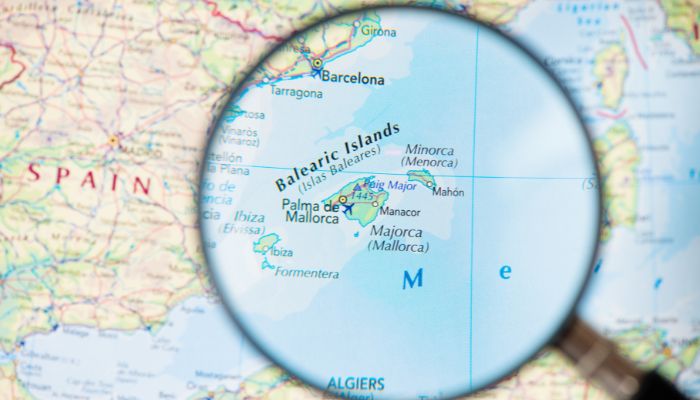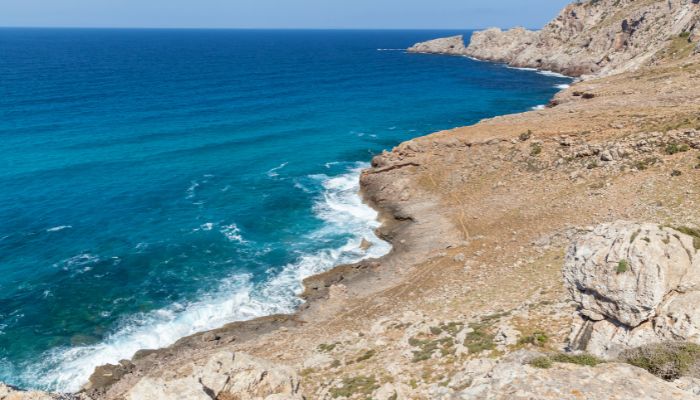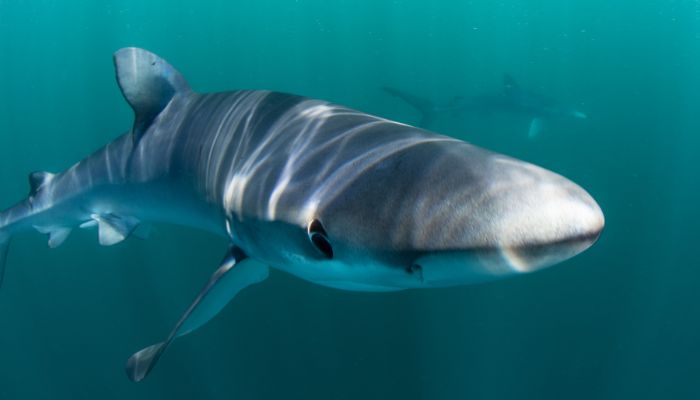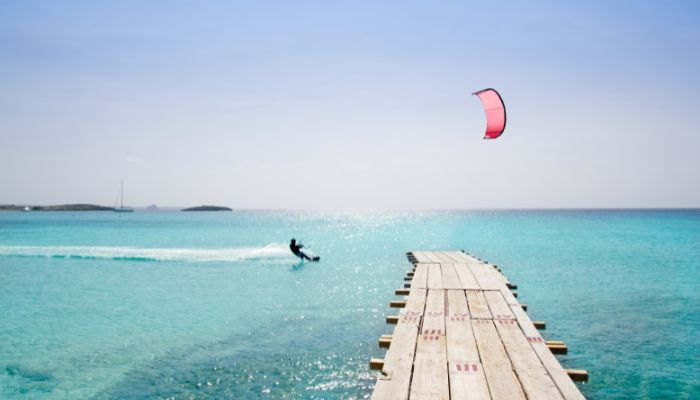10 Facts About Balearic Sea
The Balearic sea is a part of the Mediterranean sea and lies between the eastern portion of Spain, southern France, and the western region of Corsica and Sardinia islands. From the northeast, it is bordered by the Ligurian sea.
It is an important water body for the Mediterranean countries and a tourism hotspot. The sea supports not only diverse sea life but also millions of people.
Let us explore some interesting facts about the Balearic sea in this article.
1. Formed over 5 million years ago by the most devastating flood in the planet’s history
Part of the mediterranean sea, the Balearic sea, was created as the waters from the Atlantic breached the mountain ranges connecting Europe and Africa with tremendous force. The waters flowed for two years at a speed of 100 km per hour, and the sea level rose by over 10 metres daily.
The scars or depressions created by the water flow can be seen on the seabed even today. The massive deluge occurred over 5 million years ago due to the subsidence in the seafloor. This ultimately led to the collapse of a land bridge between the Atlantic and the Mediterranean basins. The latter was a dry low-lying region at that time.
The ridge had connected the Betic and Rif mountain ranges that traverse the shores of Spain and Morocco.
Mediterranean sea was filled with water in about two years, scientists estimate. During this time, the Balearic sea was formed, as were the other straits, channels and smaller rivers of the region.
2. Covers 150,000 km2 and borders the Gulf of Lion and Gulf of Cadiz
Balearic sea spans approximately 150,000 square kilometres, and its west-east extent is from Gibraltar Strait to the coastline of Iskenderun Gulf on the southwestern coast of Turkey, about 4000 kilometres. Its north-south extent is from Croatia’s southernmost coast and Libya, about 800 kilometres.
The Balearic sea borders the Lions and Cadiz Gulfs. The former lies near the Spanish coastline of Catalonia, extending from Begur in the west to Toulon towards the east. Many rivers like Rhone, Tech etc. flow into the gulf, dotted with several ports, the most important being Marseille.
The Gulf of Cadiz lies in the northeastern Atlantic Ocean between the southernmost point of mainland Portugal and Cape Trafalgar at the western point of the Gibraltar strait. Guadalquivir and Guadiana rivers, along with smaller rivers like Odiel, Tinto and Guadelete, meet the ocean at this point.
3. Experiences a tropical, Mediterranean-type climate
The Balearic sea records the highest annual thermal amplitude compared to other basins. The lowest temperature is recorded in February, which is 13-degree Celsius, due to the influence of the cool waters flowing from the North Basin. High temperatures are seen in August, with similar temperatures recorded in the Algerian basin, where the warmest waters are found in the spring and summer months. Balearic sea usually has pleasant and not harsh winters, with temperatures not dropping below 12 degrees Celsius.
However, research has highlighted increased annual warming in the sea over the last 25 years. Every year, the mean temperature in the Balearic sea has risen by 2 degrees Celsius. In other words, summer months have become long and begin earlier than they did a few decades ago in the Balearic basin and the Spanish Mediterranean region.
4. Dotted with important port cities
Barcelona is the capital of Catalonia, the second biggest city and the largest seaport in Spain. It is also an important educational, cultural and historical centre with a history going back to 2000 years. Facing the Balearic sea, the port has been a crucial hub of textile production right from the 11 th century and one of the first European cities to undergo the Industrial revolution.
Modern-day Barcelona is popular for manufacturing pharmaceuticals, chemicals, electronics, and motors. It has a rich tradition in craftsmanship and hosts several international trades shows each year.
It has two international container terminals, two break-bulk wharves, four liquid cargo terminals, two RORO terminals and five cruise terminals.
Another important port city is Valencia. Titled the busiest port in the Mediterranean, Valencia handled 81 million tons of cargo and 5.2 million TEU in 2019. It has 40 berths and 72 wharves for accommodating all types of ships carrying furniture, timber, textiles, foodstuffs, fuel products, chemical and motor vehicles, construction material etc.
It accommodates regular ferries to and from Italy and the Balearic islands. Recently, it has emerged as an important cruise port in the region.
5. Rich in marine flora and fauna
The Balearic sea is salted and well-oxygenated, offering the ideal conditions for the development and flourishment of many marine species. Many beautiful underwater plants like the Posidonia oceanica call the Balearic sea it’s home. It has colourful flowers and fruits and is often confused with algae. It forms marine meadows that house and support thousands of small fish.
Cymodocea Nodosa is a seagrass which is abundant in the Balearic sea. It can reach up to 60 cm in height and has a wooden stem. Zostera Marina is grass with delicate leaves. An invasive species from Australia are the Caulerpa Cylindracea and the Caulerpa taxifolia, which appeared in the waters after escaping the Monaco aquarium.
Over 400 species of fish, invertebrates, crustaceans, birds and mammals reside in its waters. Among mammals, bottlenose dolphins and blue sharks are the most famous among visitors. The Balearic shearwater is native to Spain but is going extinct as only 300 breeding pairs remain in the world.
In the invertebrate family, moray eels, the Scorpaena scrofa or “cap Roig”, a redfish covered with spines, is a highly-priced gastronomical delicacy. Octopus and jellyfish are also found in abundance. Barracudas, silly turtles, white sharks and congers are pretty common.
6. Houses the Balearic Islands
Lying in the western part of the Mediterranean sea, the Balearic islands are distinguished into two groups, the Gimnesias islands in the north and the Pitiusas islands in the southwest.
The Menorca, Mallorca and the Cabrera are part of the former, while Ibiza and Formentera are in the latter. The surrounding waters are relatively shallow, less than 200 metres deep. The archipelago lies 50 to 100 miles east of the Spanish mainland. Both island groups are connected by a sill close to Cape Nao in the Alicante province.
The Balearic islands autonomous community was founded in 1983, with its centre or capital as Palma, which is also the island’s cultural, ecclesiastical and educational hub.
The islands have a diverse topography, with hills, plateaus, mountains and grasslands. Rainfall is not abundant and seldom exceeds 450 mm annually.
Crops like almonds, peaches, apricots, wheat, and tomato are grown. People also engage in cattle rearing. The manufacturing industry is small and limited to shoes, furniture and textiles.
7. A popular tourist attraction in the Balearic Sea
The Balearic islands are a world-famous tourist attraction. Each island is unique and offers a different experience to travellers. Mallorca has medieval churches, ancient fishing villages, awe-inspiring monasteries and pristine white sandy beaches, offering a peaceful and pious stay.
Most people visiting Mallorca must visit the Art Museum and the cultural centre, which depict the island’s rich cultural heritage. Playa de Palma is the best beach on the island and has excellent facilities. It also has a yacht club, which hosts sailing competitions and offers training.
Menorca is a quiet place known for its many restaurants and cafes by the seaside. Ibiza has a lively ambience and pretty beaches. Known for its nightlife, it also houses a UNESCO-listed old town, a fortified settlement of the medieval age.
Formentera has a beautiful coast and a nature reserve that is a must-visit for all nature lovers. It is less visited by tourists and has many secluded beaches. It is best for hiking and has many hiking routes. It can be explored on a bicycle too. The historic town of Saint Francesc de Formentera is known for the 18th-century parish church, the Ethnography museum and the fine boutiques and cafes.
The principal port of Formentera Island is La Savina. Ferries carrying tourists from Eivissa on Ibiza Island arrive here regularly.
8. The Ebro River drains into this small sea
The Ebro is an important river in the north of the Iberian peninsula. It originates in Cantabria, flowing in the east-southeastern direction into the Mediterranean sea. The Ebro forms a delta in Tarragona province, is the second longest river after the Tagus and has one of the largest river basins.
It flows through several towns and cities like Reinosa; Frías in Castile, León, Alfaro, Alagón, etc.
The Ebro river delta wetlands are home to over 300 bird species; hence in 1986, Spain designated an area of the delta as a protected zone called the Ebro Delta Natural Park.
9. Fishing is an important source of livelihood for Balearic communities
Fishing is an important source of income for the Balearic communities. Fish like groupers, red scorpion fish, congers, and morays dwell on the rocky bottom, whereas other species include sea bass, gilthead and dentex. Also, offshore fishing in the Balearic islands is quite popular, and fishing regions abundant with bluefin tuna, albacore, and swordfish aren’t very far. Many people come to the islands, especially Mallorca, for recreational fishing.
On the islands, there are over 70,000 fishermen that use over 60 types of fishing techniques, along with coastal angling. Around 4% also practice submarine fishing. However, increased tourism and influx of people have disturbed the region’s delicate ecosystem.
The catch has decreased over the years; aquatic pollution and air and noise pollution have increased. Sustainable tourism is the key to tackling these issues.
10. A heaven for lovers of water sports and adventure
Balearic islands offer the ideal landscape for various water sports. Nine kilometres from the capital Mahon, Menorca, is the beach lined with pines and dunes. The waters of the Es Grau are perfect for beginner snorkelers, as waves are almost non-existent.
Illetes on the northern end of Formentera, with its turquoise waters, are famous for kite-surfing, water-skiing and windsurfing due to its calm waves and strong winds. Alcudia Bay has a windsurfing school and is a perfect spot for underwater diving. One can try flyboarding or wakeboarding in San Antonio Bay, Ibiza.
You might also like to read-
- 11 Not-So-Known Facts about the Indian Ocean
- 10 Caspian Sea Facts You Must Not Be Aware Of
- 10 Facts Of Gulf Of Aden You Must Know
- 10 Facts About The Laccadive Sea
- 10 Major Facts About Sulu Sea You Must Know
Disclaimer: The authors’ views expressed in this article do not necessarily reflect the views of Marine Insight. Data and charts, if used, in the article have been sourced from available information and have not been authenticated by any statutory authority. The author and Marine Insight do not claim it to be accurate nor accept any responsibility for the same. The views constitute only the opinions and do not constitute any guidelines or recommendations on any course of action to be followed by the reader.
The article or images cannot be reproduced, copied, shared, or used in any form without the permission of the author and Marine Insight.
Do you have info to share with us ? Suggest a correction

About Author
Zahra is an alumna of Miranda House, University of Delhi. She is an avid writer, possessing immaculate research and editing skills. Author of several academic papers, she has also worked as a freelance writer, producing many technical, creative and marketing pieces. A true aesthete at heart, she loves books a little more than anything else.
Latest Maritime Knowledge Articles You Would Like:
Subscribe To Our Newsletters
By subscribing, you agree to our Privacy Policy and may receive occasional deal communications; you can unsubscribe anytime.




















